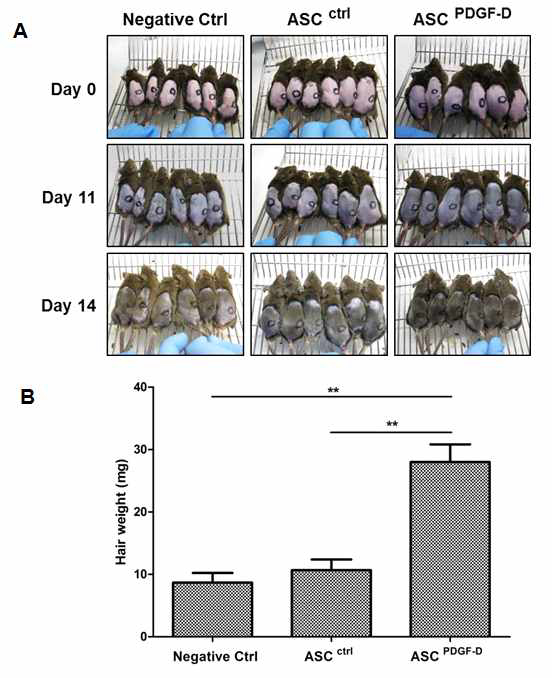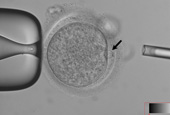Researchers at Yonsei University have discovered ways to use adipose-derived stem cells to treat hair loss.
According to the Ministry of Science, ICT and Future Planning, the researchers cultivated adipose-derived stem cells and injected them into mice only to find out that the speed of hair growth more than tripled.
Adipose-derived stem cells are types of mesenchymal stem cells that would differentiate into fat cells, cartilage, muscle and fat. There have been many attempts to fight hair loss by using adipose-derived stem cells in the past, but incubating enough cells for treatment is too costly and takes too much time.
Thus, researchers tried to find a new growth factor to boost the production of adipose-derived stem cells and to expand their generative ability. The scientists then came across platelet-derived growth factor-D (PDGF-D), which induces the proliferation and differentiation of cells. When the growth factor is added to cultivated adipose-derived stem cells, the speed of growth and proliferation of the cells more than doubled.

The adipose-derived stem cells are then cultivated together with the PDGF-D and injected under the skin of test mice whose back hair had been shaved. The hair grew so fast that the animals' backs were covered with hair again in only two weeks. The weight of the new hair of the mice with the stem cells more than doubled that of the control mice.
The faster multiplication and differentiation of adipose-derived stem cells is attributed to the fact that PDGF-D produces active oxygen, which encourages the proliferation of stem cells.
The research results were recently published online in Stem Cells, a stem cells related academic journal.
"Within three to five years, it will be possible to develop a stem cell treatment for hair loss," said a Yonsei researcher. "The research results support the theory that a low concentration of active oxygen acts as a neurotransmitter in the cells and affects the growth of the cells and this is an academic achievement."
By Limb Jae-un
Korea.net Staff Writer
jun2@korea.kr

According to the Ministry of Science, ICT and Future Planning, the researchers cultivated adipose-derived stem cells and injected them into mice only to find out that the speed of hair growth more than tripled.
Adipose-derived stem cells are types of mesenchymal stem cells that would differentiate into fat cells, cartilage, muscle and fat. There have been many attempts to fight hair loss by using adipose-derived stem cells in the past, but incubating enough cells for treatment is too costly and takes too much time.
Thus, researchers tried to find a new growth factor to boost the production of adipose-derived stem cells and to expand their generative ability. The scientists then came across platelet-derived growth factor-D (PDGF-D), which induces the proliferation and differentiation of cells. When the growth factor is added to cultivated adipose-derived stem cells, the speed of growth and proliferation of the cells more than doubled.

(A) Mice whose hair was shaved for research purpose (far right column) are injected with adipose-derived stem cells to see whether or not their hair grows comparably faster than that of other mice. Photos are taken on day 0, day 11 and day 14. (B) The weight of the new hair on the mice injected with adipose-derived stem cells more than doubles over that of the control mice 14 days after the injection. (photos courtesy of the Ministry of Science, ICT and Future Planning)
The adipose-derived stem cells are then cultivated together with the PDGF-D and injected under the skin of test mice whose back hair had been shaved. The hair grew so fast that the animals' backs were covered with hair again in only two weeks. The weight of the new hair of the mice with the stem cells more than doubled that of the control mice.
The faster multiplication and differentiation of adipose-derived stem cells is attributed to the fact that PDGF-D produces active oxygen, which encourages the proliferation of stem cells.
The research results were recently published online in Stem Cells, a stem cells related academic journal.
"Within three to five years, it will be possible to develop a stem cell treatment for hair loss," said a Yonsei researcher. "The research results support the theory that a low concentration of active oxygen acts as a neurotransmitter in the cells and affects the growth of the cells and this is an academic achievement."
By Limb Jae-un
Korea.net Staff Writer
jun2@korea.kr
